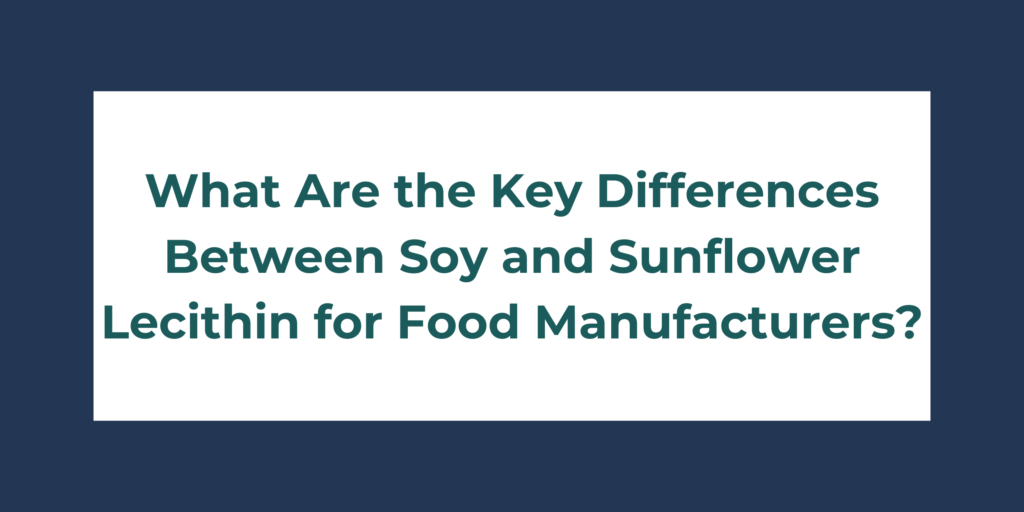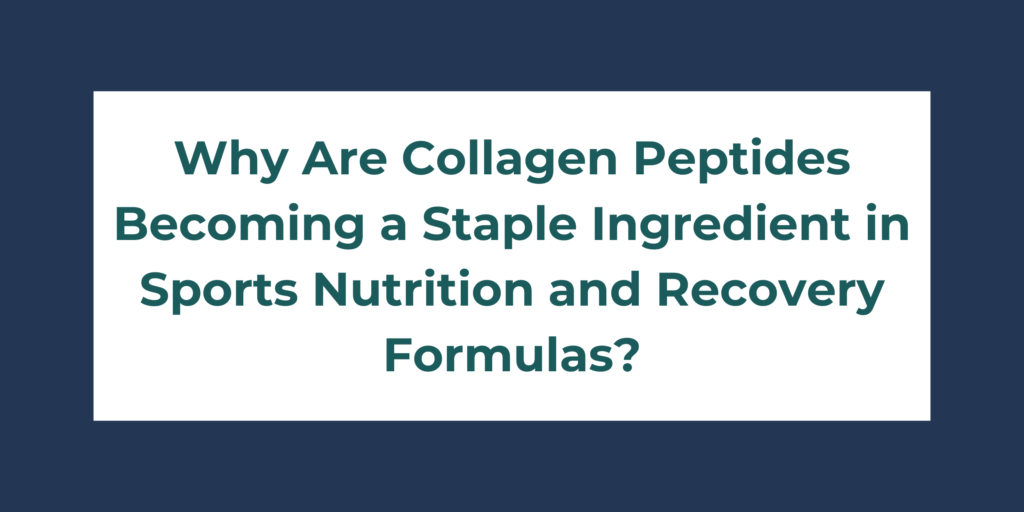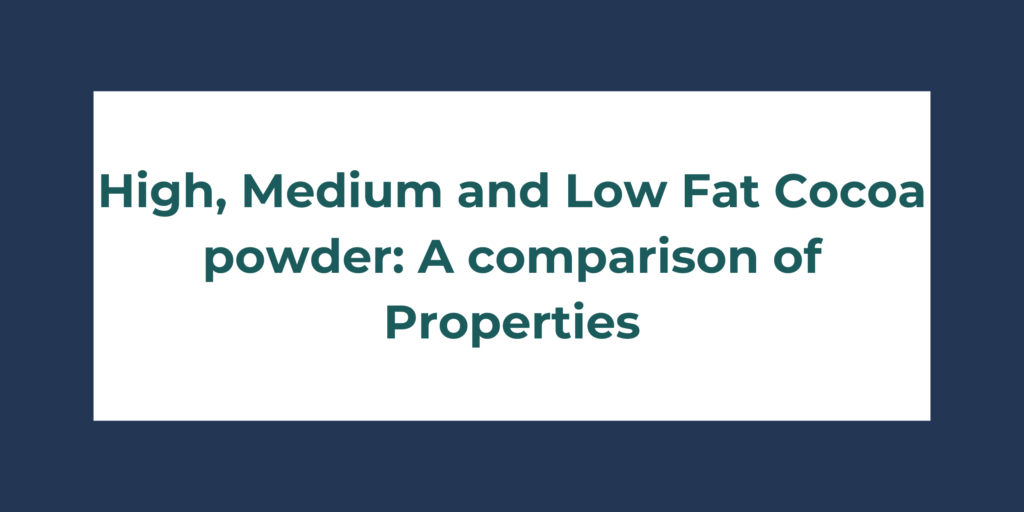What Are the Key Differences Between Soy and Sunflower Lecithin for Food Manufacturers?

Lecithin is a critical emulsifier and stabilizer used in the food industry, with sunflower and soy lecithin being the two most commonly used types. Both ingredients offer essential functional properties but differ in terms of source, processing, and other technical aspects that make them suitable for specific applications. For food manufacturers, understanding these differences can […]
How Does Lecithin Improve Solubility and Texture in Whey Protein Powders?

What Is Lecithin and Why Is It Used in Whey Protein Powders? Lecithin is a naturally occurring phospholipid compound found in plant and animal tissues, most commonly sourced from soybeans, sunflower seeds, and eggs. It functions as an emulsifier, stabilizer, and wetting agent in various food products, including whey protein powders. Key Functions of Lecithin […]
What Makes Marine Collagen Peptides a Superior Choice for Clean Label Products?

What Are Marine Collagen Peptides and How Do They Differ from Other Collagen Sources? Marine collagen peptides are a type of collagen derived from the skin, scales, and bones of fish, particularly cold-water fish such as cod and salmon. Compared to collagen derived from bovine or porcine sources, marine collagen stands out for its bioavailability, […]
Why Is Chocolate Couverture the Preferred Choice for High-End Pastry Chefs and Chocolatiers?

What Is Chocolate Couverture and What Sets It Apart from Regular Chocolate? Chocolate couverture is a high-quality chocolate that contains a higher percentage of cocoa butter than regular chocolate, typically above 31%. It is known for its smooth texture, superior melting properties, and the ability to create a glossy, professional finish when tempered. Couverture chocolate […]
How Are Collagen Peptides Being Integrated into Beauty, Fitness, and Wellness Products?

What Are Collagen Peptides, and Why Are They Popular in Beauty, Fitness, and Wellness Products? Collagen peptides are hydrolyzed proteins derived from collagen, which is the primary structural protein in the human body. They are produced by breaking down collagen into smaller peptide chains, making them more easily absorbed by the body. Collagen peptides have […]
Why Are Collagen Peptides Becoming a Staple Ingredient in Sports Nutrition and Recovery Formulas?

What Are Collagen Peptides, and How Are They Produced? Collagen peptides are short chains of amino acids derived from collagen, a structural protein that is abundant in the human body, particularly in connective tissues such as skin, tendons, ligaments, and bones. Collagen is known for its tensile strength and is essential for maintaining the structural […]
Replacing Sugar with Maltitol in Your Diet: What Are the Health Implications?

What Is Maltitol and How Does It Compare to Sugar? Maltitol is a sugar alcohol (polyol) commonly used as a sugar substitute in a variety of food products. It is derived from maltose, a disaccharide obtained from starch, typically corn or wheat. Chemically, it is a hydrogenated carbohydrate, possessing a similar structure to sucrose, but […]
How Does Chocolate Couverture Influence the Taste and Texture of Gourmet Desserts?

What Makes Chocolate Couverture the Preferred Choice for Premium Desserts? Chocolate couverture is a type of high-quality chocolate that contains a higher percentage of cocoa butter, typically between 31% and 39%, compared to regular chocolate. This makes it a favorite among professional chefs and chocolatiers who are looking to create premium desserts. The higher cocoa […]
Collagen Peptides: what are the Applications and Advantages?

What are collagen peptides? Collagen peptides are short chains of amino acids derived from collagen, a protein abundant in the skin, bones, and connective tissues of animals. They are created by breaking down the full-length collagen molecules into smaller, more easily absorbed fragments. These peptides are bioavailable, meaning they can be quickly absorbed and utilized by […]
High, Medium and Low Fat Cocoa powder: A comparison of Properties

What is cocoa powder, and how does its fat content vary? It is made by grinding cocoa beans into a paste, which is then pressed to remove some of the cocoa butter. The resulting solids are ground into a powder with varying fat contents: High-Fat Cocoa: Contains 18-24% fat. Medium-Fat Cocoa: Contains 10-17% fat. Low-Fat […]

